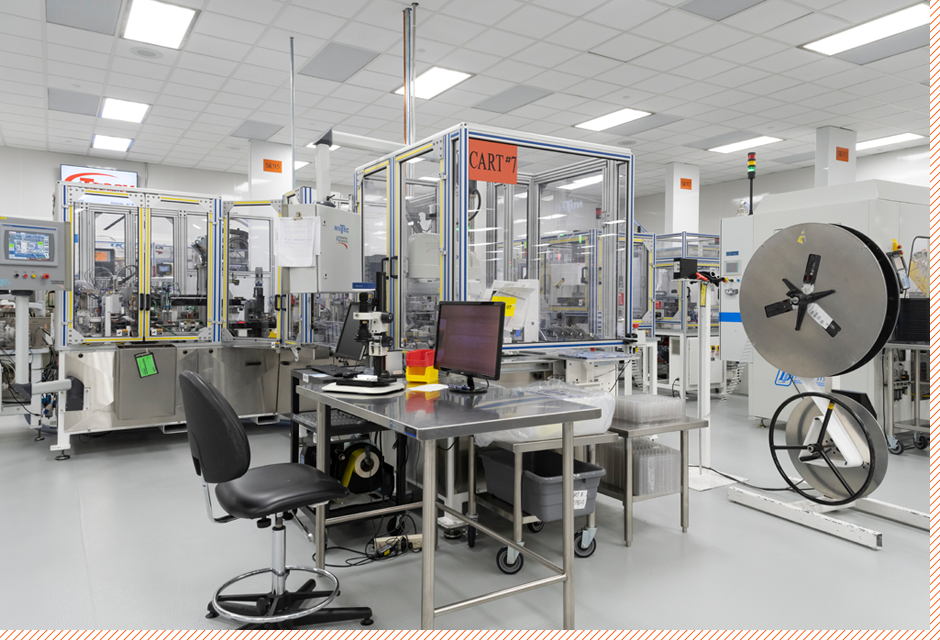Shifting Patient Care: Minimally Invasive Surgical Devices
How Contract Manufacturing Can Help
Shift in Patient Care from In-Patient to Minimally Invasive Surgical Devices

Advances in technology and the momentum to reduce health care costs have provided the incentive for hospitals and physicians to seek ways to replace in-patient surgeries with minimally invasive procedures. Industry experts predict that new technology incorporating AI and robotics will streamline hospital administration and provide higher levels of patient safety and satisfaction. Healthcare delivery in rural areas and the growth of ambulatory surgical centers require further development in making medical devices more portable.
Bloomberg analysts report that the Affordable Care Act is not likely to be repealed in 2019, however, the Trump administration will work towards giving states more flexibility. The aging population, stronger Medicare rate increases and improvements in patient care should continue to support growth in North American hospitals. Interoperability, the ability of different information Shift in Patient Care from In-Patient to Minimally Invasive Surgical Devices systems, devices or applications to connect, in a coordinated manner, within and across organizational boundaries to access, exchange and cooperatively use data amongst stakeholders, with the goal of optimizing the health of individuals and populations is viewed as the ideal solution toward meeting these needs. Deloitte cited interoperability as the force to enable hospitals of the future to help hospitals move from episodic to collaborative and longitudinal care.
As in-house surgeries shift to outpatient facilities, communication among the various devices both within the surgical theater as well as with hospital data management systems compel the medical device industry to design for both portability and adaptability. OEM’s must design devices that meet the demand for features that support interoperability to improve patient outcomes and provide accurate tracking of each procedure, resulting in detailed patient records to be used for outpatient services and future procedures.
Speed to Market Challenges for OEM Manufacturers
According to strategic technology provider Intersystems Healthshare, “In the new medical device market, the value of the device and data alone will not drive sales. Instead, it will be solutions that bundle device, data and real-time analytics that clinicians, health systems, and payers will want to buy.”
The mandate for new, value-added products coupled with the challenge of navigating the FDA’s approval process with the added expense of additional approval fees, will continue to challenge of Original Equipment Manufacturers (OEM). to drive sales and deliver quality products while holding profit margins
Shifting Production Requirements
Ongoing product development to add value by improving quality and utility while remaining cost-efficient is the strength of OEMs. As existing devices change shape and utility, the devices must be tested and re- tested to assure product viability in terms of safety and reliability, then in many cases, re-enter the pre- market regulatory process.
As products change, the question becomes how to manufacture to scale according to quality standards within a compressed timeline.
Agile Contract Manufacturers Speed Development
Contract manufacturers with a focus on medical device product development can be key partners, enabling OEMs to save time and the capital expense of re-tooling their plants in order to come up to scale with a new or revised device. OEMs considering partnerships should vet contract manufacturers to verify their capability to perform rapid prototyping and work collaboratively with medical professionals to ensure the finished device meets all testing requirements. Agile partners can then work to evaluate the product design for manufacturability to ensure that production is brought up to scale using lean techniques in the most cost-efficient manner.
Prospective contract manufacturers should be able to answer “yes” to these questions:
- Can you manufacture in compliance with ISO13485 and ISO 14001?
- Are you FDA/GMP registered?
- Do you have ISO Class7/8 clean room manufacturing?
- Do you have a highly sophisticated quality management system?
- Do you practice sustainable procurement?
- Be certain to ask:
What is your experience with manufacturing products for companies with FDA obligations? - How do you support your clients in this effort?
- Are you prepared for FDA inspections?
Case Study
Tessy Plastics is a global contract manufacturer headquartered in Skaneateles, NY, specializing in injection molding and custom automated assembly solutions. According to Stafford Frearson, Vice President of Engineering:
“The key to integrating a new product quickly and efficiently is rapid prototyping with the end goal of design for manufacturability (DFM). Our rapid prototyping methodology is based around the idea of ‘failing fast’. In other words, through our capabilities with 3D printing parts and developing rapid prototype molds, we are able to produce several iterations of initial concepts for a project/program. This allows us to quickly identify which design concepts will be the most suitable for production of the product.”
This methodology has proven successful in cases where customers want initial samples without spending a significant amount of capital upfront in order to prototype multiple designs. This prototyping process allows the customer to test various designs for their product in a short period of time and for less investment when compared to traditional tooling. Ultimately, this will allow the customer to quickly determine which design is best suited for release and reduce time to market.
Benefits of Using a Contract Manufacturing vs. In House Production
The benefit of using a contract manufacturer, like Tessy, is being able to leverage our expertise to provide innovative solutions for manufacturing. These solutions often provide a more cost effective product for the customer with the ability to continuously improve the price over the life time of the project,” added Frearson. Companies should seek the services of premium Contract Manufacturers that excel at providing…
- On time delivery rate and external quality defect rate
- Engineering services and Research & Development teams that act as an extension of the
OEM design team. - Turnkey services from prototype, to tooling, automation, manufacturing and delivery, on-time and
within budget. - In-house expertise for high quantity medical devices, micro-molding, LSR, and other technically
challenging assembly processes. - Clarity in their pricing structure.
All of these benefits enable OEMs to reduce capital equipment and overhead costs while providing premium quality products, ready for FDA approval in record time.
